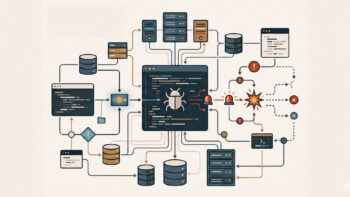Ubiquitous video surveillance, cameras present in almost every public space – this is our reality today, for which a team of Italian researchers is proposing a non-obvious alternative: identifying people not by image, but by Wi-Fi signal. Their project, called WhoFi, could become a breakthrough in the field of visionless biometrics – promising more discreet monitoring, but raising questions about the limits of privacy.
Biometrics without an image – how does WhoFi work?
The technology developed by the researchers is based on the analysis of Wi-Fi Channel State Information (CSI). Every Wi-Fi transmission is susceptible to interference, which occurs when the signal encounters physical obstacles – including human bodies. Body shape, mass, bone structure and even the way we move affect the way the radio signal bounces and refracts.
WhoFi uses these distortions as a biometric signature of the user. The model analyses the dynamic CSI changes that occur when a person moves within range of a Wi-Fi transmitter. Unlike traditional surveillance systems, WhoFi does not require a camera, light or direct visibility – as radio signals can penetrate walls and other physical obstacles.
At the heart of the system – neural networks
WhoFi is based on a modular deep learning model. The researchers tested several neural network architectures for CSI time series processing: including LSTM (Long Short-Term Memory), Bi-LSTM (bidirectional LSTM), as well as Transformer, an architecture mainly known for natural language processing, but increasingly used in sequential data analysis.
A key innovation was the use of a technique called batch-wise negative loss. It enables the model to autonomously extract the characteristics of users without the need for manual labelling of data. This allows WhoFi to learn to distinguish between individuals based on their unique ‘influence’ on the Wi-Fi signal.
Results that match the cameras
The technology was tested on the NTU-Fi open dataset used in wireless identification research. The experiments showed that WhoFi’s efficiency in recognising people was comparable to the results obtained by systems based on camera images. Moreover, the system remained highly effective even in complex environmental conditions – with limited light or the presence of physical obstacles.
The research team also analysed the impact of various factors on the model’s performance, such as the length of the data sequence analysed, the depth of the neural network and the level of data augmentation. The results suggest that the technology has the potential to scale – both in large public spaces and smaller, private environments.
Possible applications
From a technology market point of view, WhoFi opens up new possibilities in areas where optical monitoring is difficult, inefficient or undesirable. Examples of application scenarios include:
- Nursing homes and hospitals, where it is important to monitor the presence and movement of patients without invading their privacy.
- Smart buildings where WhoFi can act as a discreet access or presence control system.
- Emergency situations, e.g. detecting the presence of people behind walls during rescue operations.
- Privacy-regulated environments, such as premises covered by RODO or government infrastructure.
The technology also has the advantage of being compatible with existing infrastructure – most buildings already have a Wi-Fi network, meaning that WhoFi could be deployed without the need to install additional sensors.
A new dimension of privacy?
Despite the promising results, WhoFi raises significant ethical and legal questions. From an end-user perspective, the lack of cameras may create the illusion of privacy – while the system still identifies and tracks people based on their physical characteristics.
The transparency of operation is also limited – unlike cameras, which are easily visible, Wi-Fi-based surveillance can be almost completely invisible. This, in turn, can lead to unintentional or unknowing surveillance, which poses a challenge to compliance with data protection regulations.
Finally, as with any biometric technology, there are questions about the possibility of spoofing, misidentification or unauthorised use of biometric data – even if it comes not from an image but from radio wave interference.
A step into the future – with reservations
WhoFi is an example of a technology that redefines the boundaries of biometrics. It shows that we don’t need faces, voices or fingerprints to identify people – just the way we interact with the space around us. This is a fascinating but also worrying development.
From a technical point of view, WhoFi could become a viable alternative to video surveillance systems, especially in environments where video is not available or desirable. From a business perspective – it opens up new market segments for AI and surveillance solutions. But from an ethical one – it requires clear rules, a transparent regulatory framework and informed use.












